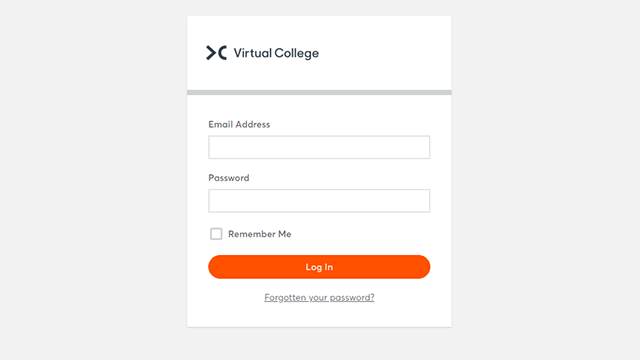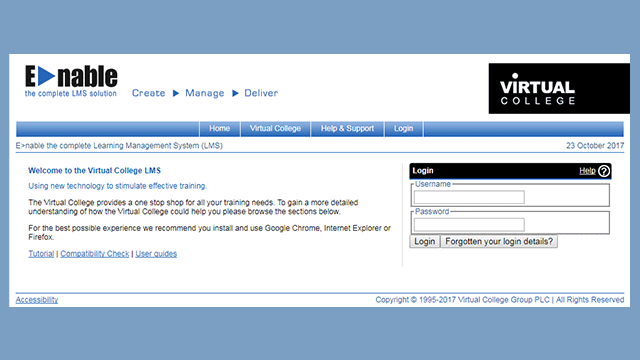Bespoke Training Solutions
Simply put, we build high-quality, modern and innovative learning experiences. Customised to your organisation and designed around three essential components – your learners, your objectives and your brand.
We regularly help with common and more complex training problems such as resolving a training backlog, scaling face-to-face training digitally or responding to changing skills needs, through to keeping people safe and compliant in the workplace.

Discover
Getting to the heart of your culture and your people.
Using nearly three decades of experience in building award winning learning programmes, our journey always begins with a deep dive into your people and your organisation.
We want to know all about your challenges, your goals and learning objectives. We want to get to the core of what’s working, what’s not and what you’re really trying to achieve. But most importantly, we want to understand your learning culture and what truly motivates your people.
For further detail on how this process works, please view our guide here.


Develop
Building impactful experiences designed around your learners.
No matter the scale and complexity of your challenge, we’re here every step of the way, working with you as one extended team. We regularly help with common and more complex training problems such as resolving a training backlog, scaling face-to-face training digitally or responding to changing skills needs, through to keeping people safe and compliant in the workplace.
Using our Human-Centred approach to learning design, we’re guaranteed to build training that makes a real difference to your organisation, building the skills, knowledge and confidence your people need to excel.
Take a look at our guide on the various forms of effective learning design that help create the right solution for your learners’ needs here.
Evolve
Working together for the long term.
We believe that learning is a long-term game. That’s why most of our clients come back to us year after year as we learn and evolve together. Afterall, we’re on a continuous learning journey too.
By analysing and learning from the results we achieve, we work with you to evolve and develop your training programmes for the long-haul, enabling you to scale, adapt and grow in the ever-changing world of people development.
Read our guide on how we support you to measure and maintain the success of your learning solution here.

Services that make a difference, to you and your learners.
Learning Solutions Consultancy
As part of our discovery phase, we’ll quickly get to bottom of your key challenges, needs and objectives to ensure we get it right and build experiences that make a real and lasting difference.
We’ll conduct essential activities such as stakeholder research and engagement, learning strategy evaluation and development through to implementing a training needs analysis and creating learner personas to understand your learners better. But all in all, we’ll be here offering advice and support at every opportunity.


Learning Solutions Design
First and foremost, we'll create learning design standards that underpin the development of all our learning solutions that are unique to your learners and your brand. From here we'll create learning design ideas and prototypes, which of course you'll be the first to see and review. Following this we'll analyse and map your content to your key learning objectives and desired outcomes. It's a winning formula!
Learning Solutions Development
During our learning solutions development process, we’ll turn your learning designs into real life digital training solutions.
We’ll use the right digital assets based on what’s right for you and your learners, from e-learning, games, videos, and animations through to simulations and emulations and AR/VR. We’ll also develop training that fits best with your culture, whether this is micro-learning or more in-depth training programmes. And not only that, but we’ll also put in place the right hosting solutions and accreditations as needed to meet your goals.


Learning Solutions Deployment
Whether your training will be hosted through our specialist LMS, Enable, or through your own platform, we’re experts at deploying learning solutions no matter your requirements and technical needs.
From hosting your training to providing you with technical advice and support through to testing content on a hosted solution and troubleshooting technical issues, our team of specialist will use nearly three decades of experience to ensure the seamless deployment and roll-out of your training.

Make UK
Virtual College and Make UK are striving to develop the manufacturing industry through online education.
Read More
Interserve HSE Culture Change
Interserve required a flexible e-learning solution for their programme I-Care to become the most safety conscious company within their industry.
Read More
The Home Office: Using e-learning to combat FGM
The Home Office identified that effective, multiagency training for safeguarding professionals would help improve the support and protection provided to women and girls.
Read MoreReady to translate your business requirements into impactful learning experiences
With 27 years’ experience helping you translate your business requirements into learning is our specialism. We collaborate closely with you to get to the heart of your culture and your people and what matters to them, build impactful experiences designed around your learners and evolve your training programmes for the long-term by analysing impact and considering ever-changing business and people goals.
Speak to our team today to find out how we can solve your training challenges, no matter how big or small.






















